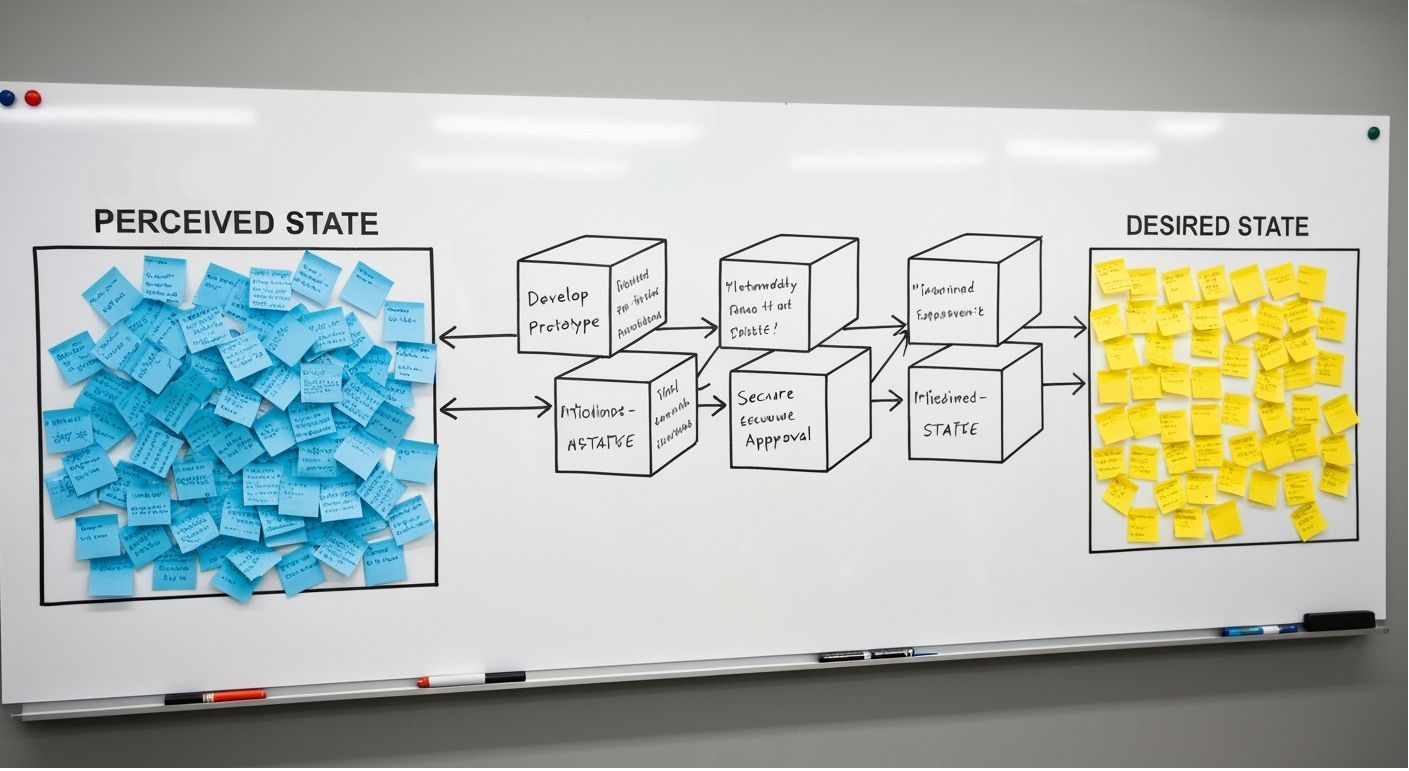Backward planning with obstacle avoidance¶

Work backwards from your goals to surface dependencies, anticipate obstacles, and design smarter steps—always face-to-face, collaboratively, and with what most frameworks miss.
Backward planning flips conventional methods on their head: instead of stepping forward from today, you start with the desired end state and work in reverse. This reveals hidden dependencies, potential blockers, and early opportunities for contingency, so teams can move forward with confidence. The choreography incorporates human realities often ignored: energy, timing, and blind spots, ensuring plans are grounded, actionable, and resilient.
The flow¶
Define the states — describe currently perceived state and clarify what success looks like and how to recognise it.
Identify milestones & dependencies — map what must come before each milestone and who or what it relies on.
Surface obstacles — anticipate risks, blockers, and challenges along the path.
Develop contingencies — design flexible strategies to navigate each obstacle.
Step forward — translate the backward map into practical, forward-acting steps.
Review & adapt — continuously monitor progress, reassess risks, and adjust actions.
Each step produces usable insight on its own, yet together these dances create a self-sustaining planning practice. By revealing hidden dependencies and obstacles before they hit, teams gain confidence in execution.